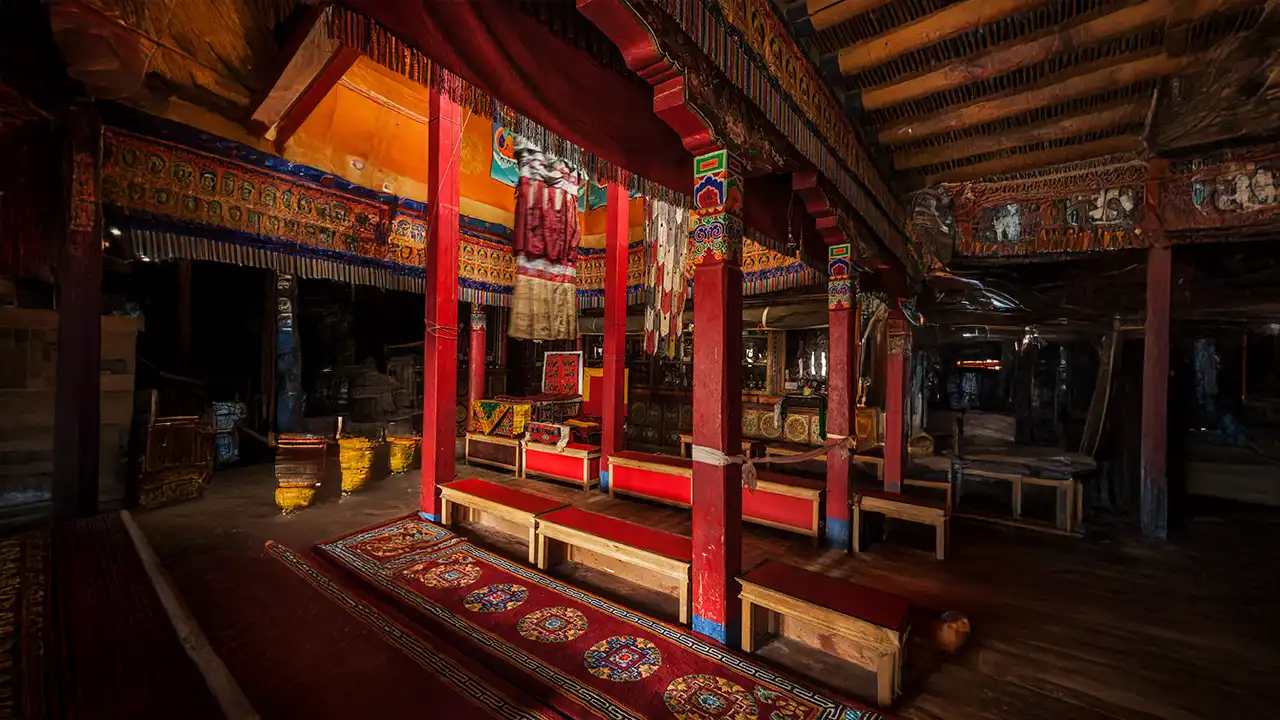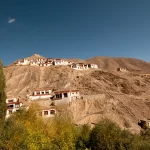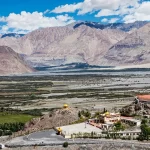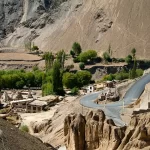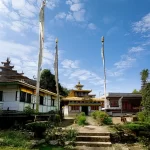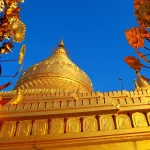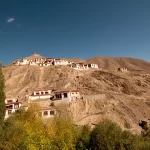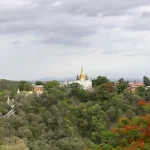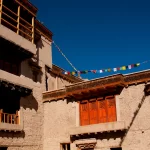Situated in Tibet’s province of Tsang and the harsh terrain, the Sakya Monastery is a gargantuan tribute to the intellectual and spiritual heritage of Tibetan Buddhism. It was founded in 1073 by Khön Könchog Gyalpo. The monastery is the principal seat of the Sakya school, one of the four large schools of Tibetan Buddhism. “Sakya,” or “pale earth,” is where the name derives from, created by the gray soil typical to the Ponpori Hills where the monastery was built.
Historical Importance
Sakya Monastery was established when there was a religious renaissance in Tibet. Its founder, Khön Könchog Gyalpo, belonged to the aristocratic Khön family, which was a powerful family that helped to propagate Buddhism in the nation. The monastery became a center for Buddhist study and practice within no time, and scholars and practitioners from all of Tibet and the surrounding nations rushed to it.
Sakya’s position in the 13th century was greatly broadened when Sakya’s fifth patriarch, Drogön Chögyal Phagpa, became religious mentor to Kublai Khan, the emperor of the Mongols. Political dominance by Sakya school subsequently resulted from its leaders ruling over Tibet under patronage from the Mongols—an era referred to as the Sakya hegemony.
Architectural Marvel
Sakya Monastery is unique in its architectural style as it is a mix of Tibetan, Mongolian, and Chinese architectural styles. The complex is divided by the Trum-chu River into two monasteries: the southern and northern monasteries. While the northern complex suffered extensive damage during the Cultural Revolution, the southern complex is intact.
The southern monastery, constructed in 1268, is a fortress-like structure with its enormous walls and watchtowers. The central assembly hall, Lhakang Chenmo, measures more than 6,000 square meters in size and has 40 enormous pillars. The hall is adorned with lovely murals and has statues of Buddhas and important Sakya figures.
The Great Library
One of the most impressive things about Sakya Monastery is its gigantic library, commonly referred to as the “Second Dunhuang” due to the quantity of its collection of ancient manuscripts. The library has approximately 84,000 books and manuscripts on a wide range of subjects ranging from Buddhist scripture, philosophy, history, astronomy, to medicine. Notably, its collections include the Kangyur and Tengyur—the focal texts of Tibetan Buddhist scripture.
The library’s shelves are 60 meters in length and 10 meters in height, containing books that have not been handled for centuries. Recent efforts have been directed towards digitizing these valuable resources so that they may be conserved for future generations.
Artistic Treasures
Sakya Monastery is a Tibetan art treasure house. Its walls hold over 3,000 beautiful murals depicting religious, historical, and cultural topics. The paintings inform us about the life of Gautama Buddha, the significant events of Tibetan history, and the Sakya masters’ lineage.
Great Tibet Tour
One of the most spectacular pieces is a 66-meter-long fresco illustrating the Buddha’s life that is located in the central assembly hall. There is also an enormous collection of thangkas (scroll paintings on religious subjects), statues, and ritual items present in the monastery, the majority of which date back to the Yuan dynasty.
Cultural Resilience
Although it has gone through numerous issues over the centuries, including political turmoil and cultural destruction, Sakya Monastery has remained remarkably resilient. The Cultural Revolution led to the destruction of most religious sites in Tibet, and Sakya was not spared. Restoration has been undertaken to preserve the buildings and artifacts of the monastery.
Nowadays, Sakya Monastery is still a live center of religious practice and studies. Pilgrims, scholars, and travelers from all across the world flock to visit it, all drawn by its spiritual power and rich heritage.
Global Influence
The influence of the Sakya school goes beyond Tibet. Following the Chinese invasion of Tibet, the majority of Sakya leaders went into exile and established monastic institutions in India and other nations. These institutions continue to preserve the teachings and tradition of the Sakya lineage and keep it alive while disseminating it globally.
Notably, the Sakya Trizin, the head of the Sakya school, resides in India and oversees the religious activities of the lineage. With his guidance, the Sakya tradition thrives to date, adapting to current contexts while remaining true to its ancient wisdom.
Visiting Sakya Monastery
For anyone who wishes to visit Sakya Monastery, it is approximately 127 kilometers northwest of Shigatse, Tibet Autonomous Region. The route to the monastery offers breathtaking views of the Tibetan plateau, from the endless landscapes to mountains topped with white snow.
Wonders of Tibet
Visitors are able to stroll through its majestic halls, admire its art works, and experience the serene atmosphere that permeates the compound. Talking with the resident monks provides deeper insights into the monastic lifestyle and the enduring legacy of the Sakya tradition.
Sakya Monastery is a glittering testament to the rich tradition of Tibetan Buddhism, a reflection of centuries of religious devotion, intellectual endeavor, and aesthetic accomplishment. Its resilience in the survival of the challenges of history is evidence of the resilience and dynamism of the Sakya tradition. For scholars, practitioners, and pilgrims, Sakya Monastery offers a profound glimpse into the very center of Tibetan culture and spirituality.

